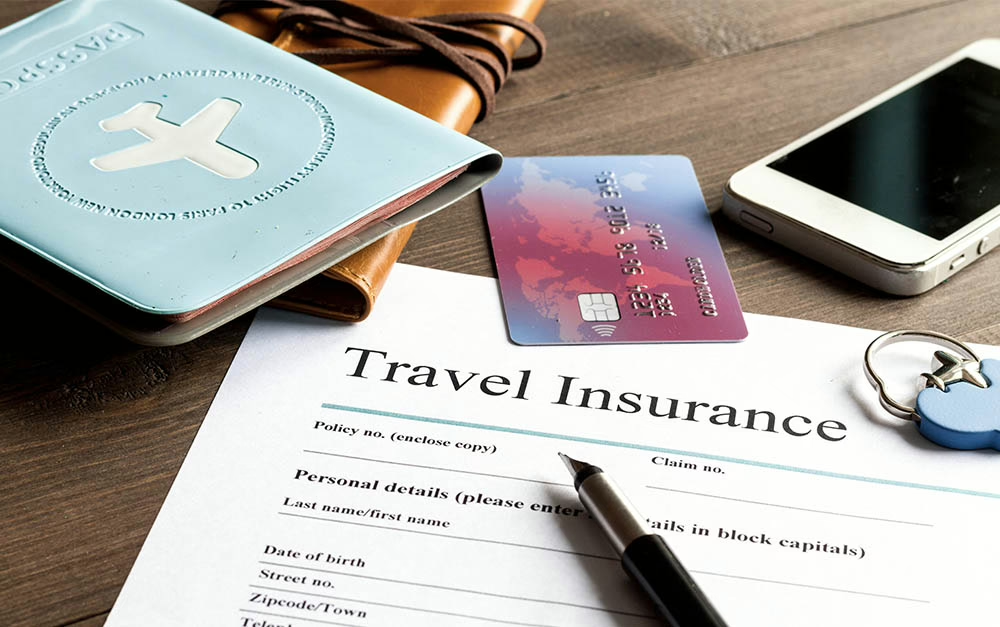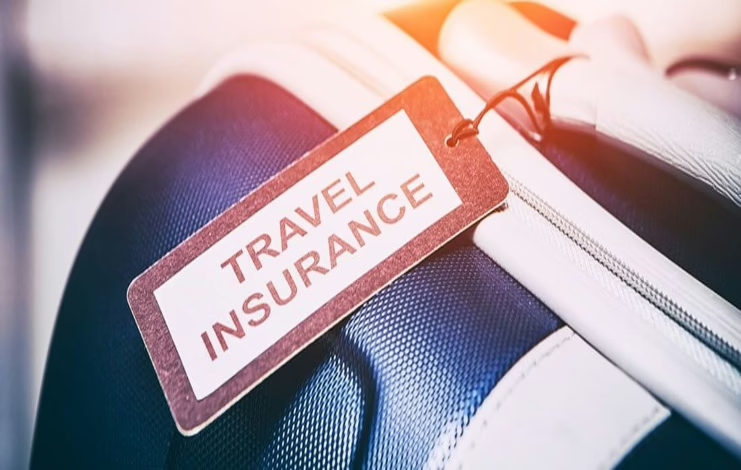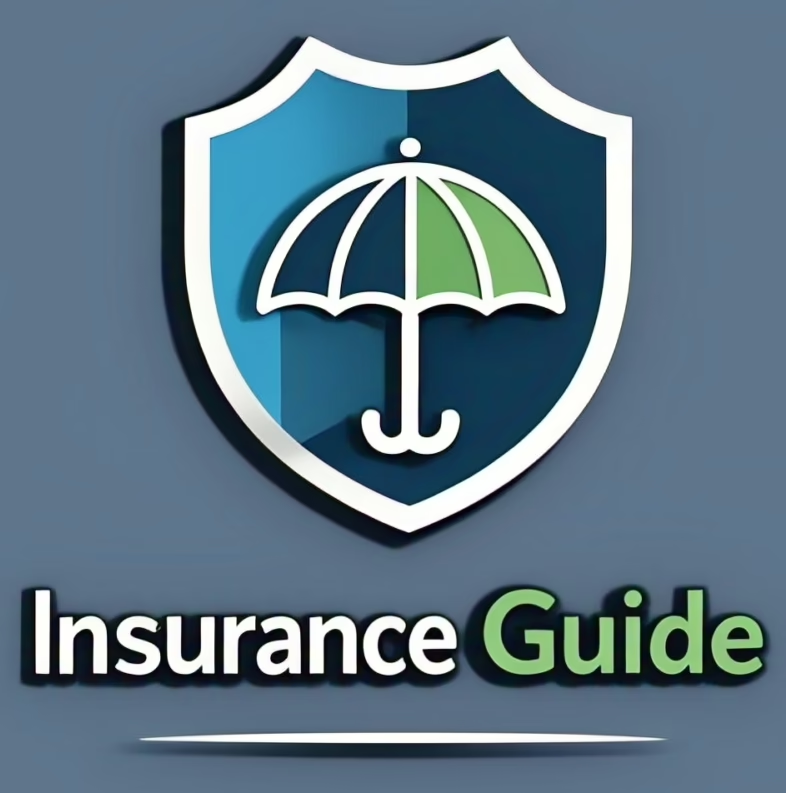Is Travel Insurance Cancellable and Refundable?
Travel insurance is more than just a safety net—it’s a booming industry, with over 40% of American travelers purchasing some form of coverage before heading out on trips, according to the U.S. Travel Insurance Association. In fact, travelers spent a whopping $3.8 billion on travel protection in a single recent year. With these kinds of numbers, it’s no wonder that questions about policy flexibility—specifically cancellations and refunds—are so common.
Imagine this: you’ve carefully planned your dream vacation, purchased travel insurance to be safe, and then life throws a curveball. Suddenly, your plans change, and you’re left wondering, “Can I cancel this policy and get my money back?” That’s what this guide is all about—breaking down the fine print and helping you understand your rights when it comes to travel insurance.
Spoiler alert: in many cases, you can cancel and get a refund, but there are catches. The good news is, if you know what to look for and act quickly, you might save yourself some money and frustration. Whether you’re a frequent flyer or a first-time traveler, understanding how travel insurance cancellations and refunds work is crucial to making the most of your policy.
Let’s dive into the essentials, clear the confusion, and help you make informed choices that won’t leave your wallet hurting if plans change unexpectedly.

Understanding Travel Insurance
Travel insurance is like a parachute—most people hope they never have to use it, but when things go south, it’s a lifesaver. At its core, travel insurance is a financial product designed to protect travelers from unforeseen disruptions, ranging from medical emergencies and canceled flights to lost luggage and even political unrest in foreign countries.
Why do people buy it? The reasons vary. Some want peace of mind in case they need emergency medical care abroad. Others fear their trip might get canceled due to illness or work obligations. Some are just cautious planners who want to protect their investment.
Most policies are customizable, letting you choose from coverage options like:
- Trip cancellation or interruption
- Medical emergencies and evacuation
- Lost, stolen, or delayed baggage
- Flight delays or missed connections
Understanding what you’re buying is key, especially if you think you might need to cancel it later. While most people focus on what’s covered, just as important is knowing your rights if you need to back out.
And here’s something many travelers don’t realize: not all policies are created equal. Some are strict and non-refundable from the get-go. Others offer flexibility, including a “free look” period that allows full refunds. Learning how to spot these differences is what makes a savvy traveler—and that’s where we’re heading next.
Types of Travel Insurance Policies
Before you can cancel a policy, you’ve got to understand what kind of coverage you actually have. Travel insurance isn’t a one-size-fits-all product. It’s more like a buffet—you choose what you need, and each coverage type comes with its own cancellation rules and refundability terms.
Here are the most common types:
1. Trip Cancellation Insurance
This covers prepaid, non-refundable trip costs if you have to cancel for a covered reason—like getting sick, a family emergency, or natural disasters. It’s the most sought-after type, and the one most people think of when they buy travel insurance.
2. Travel Medical Insurance
Designed for medical emergencies abroad, this policy can cover hospital stays, doctor visits, and even medical evacuation. It’s critical for international travel but less flexible in terms of cancellations.
3. Baggage Loss and Delay Coverage
Ever had your suitcase vanish between flights? This add-on helps you replace lost items or cover essentials if your bags are delayed. It’s often bundled with other policies.
4. Emergency Evacuation and Repatriation
This is the serious stuff—think airlifts and returning remains. It’s expensive, but a lifesaver if you’re in a remote location and need help fast.
Some policies are comprehensive and cover all these areas, while others are a la carte. Why does this matter for refunds? Because the more customized your policy is, the more specific the refund terms will be. That’s why it’s important to read the full policy and understand which sections are refundable and under what conditions.

Can Travel Insurance Be Cancelled?
Short answer: yes, it often can. But like most things involving fine print, there’s a “but” coming your way.
Most travel insurance companies offer a “free look” period—usually around 10 to 15 days from the date of purchase. If you cancel within this window and haven’t started your trip or filed any claims, you’re usually eligible for a full refund. Think of it as the grace period for second thoughts.
But what happens if you’re past that window? It gets trickier.
Some providers allow cancellations with partial refunds if the trip hasn’t started. Others might issue credits instead of cash. Then there are providers who hold firm: no refunds, no exceptions once you’re outside the free look.
So yes, cancellation is possible—but timing, policy details, and provider flexibility all play a part.
What Is the “Free Look” Period?
The “free look” period is your best friend when it comes to backing out of a travel insurance policy. Think of it like the return window on an online purchase. It typically lasts between 10 and 15 days after you buy the policy. During this time, you can read the fine print, decide if the policy really suits your needs, and back out with no financial penalty.
Here’s how it works:
- You buy a policy online or through a travel agent.
- You receive the full policy document, either digitally or in print.
- The clock starts ticking—usually 10 days from purchase.
- If you haven’t started your trip or filed any claims, you can cancel and get a full refund.
Simple, right? But here’s where many travelers trip up: they miss the deadline. Or they assume the policy can be canceled anytime. After the free look, things can get complicated fast.
And don’t forget—some third-party booking sites have different rules. Buying directly from an insurance provider gives you the most control. But if you booked through an airline or online travel agency, you might have to jump through more hoops.
Canceling After the Free Look Period
So, what if you’ve missed the golden window of the free look period? Don’t worry—your options aren’t completely gone, but they do get more limited. Canceling after this period requires a bit more effort and understanding of the fine print.
First things first: not all policies are eligible for a refund after the free look period. Whether or not you can get your money back largely depends on whether your trip has started and whether you’ve made any claims on the policy. If you haven’t traveled or filed a claim, some insurers will consider a refund—though usually not a full one.
In most cases, you’ll only get a partial refund, and sometimes you may only get a credit toward a future policy. That might sound disappointing, but it’s better than losing out entirely. Insurers have to protect themselves too—they’re on the hook for potential losses from the moment your trip begins, even if nothing has happened yet.
Some companies also charge administrative or cancellation fees when processing post-free-look-period refunds. These fees vary but typically range from $25 to $50. Make sure you factor that in before canceling, as it may significantly reduce your refund.
Here’s what you need to check:
- Your policy’s cancellation terms (usually in the last few pages)
- Whether your trip has started
- If any claims have been made
- The method of purchase (direct or through a travel agent/agency)
Bottom line? If you’re outside the free look period and want a refund, act fast and reach out to customer service. The longer you wait, the harder it becomes. Some policies even state a maximum timeframe (e.g., 30 days before departure) after which no refunds will be granted.
Refund Policy of Travel Insurance
The refund policy of travel insurance can feel like walking through a maze—full of twists, exceptions, and tiny signs you can barely see. But once you understand how these policies work, you can navigate with confidence.
Travel insurance providers usually offer three refund structures:
- Full refund during the free look period
- Partial refund after the free look but before the trip starts
- No refund after the trip has begun or if a claim is filed
Full refunds are usually easy to obtain—during the free look period and with zero usage. It’s the equivalent of returning a product with the tags still on.
Partial refunds are where things get murky. Maybe your trip got canceled but your insurance was still active for a few days. Insurers will prorate the amount, deduct administrative fees, and return what’s left. Some might not offer any refund at all but give you a credit voucher instead.
Non-refundable policies are just what they sound like—strict contracts that don’t allow cancellations after a certain point. These are especially common with budget insurers or basic-tier plans. If you chose a cheaper plan, chances are high it falls under this category.
To avoid surprises:
- Always read the “Refund and Cancellation” section of your policy.
- Know the timeline for cancellations and refunds.
- Ask questions before buying—especially if you’re unsure about travel dates.
In some cases, travel insurance is bundled with flights or cruises and becomes part of a non-refundable package. That’s where things get tricky, because the refund decision isn’t entirely in your hands—it may depend on the airline, cruise company, or travel agent.
Situations That Warrant a Refund
There are a few golden scenarios where getting a refund is not only possible but relatively straightforward—even outside of the free look period. Let’s walk through them.
1. Duplicate Coverage
Maybe you didn’t realize your credit card offered travel insurance, and now you’ve double-covered yourself. Most insurers are flexible here—if you can show proof of duplicate coverage and no claims have been made, you’re likely eligible for a refund. It’s one of the most valid and accepted reasons for canceling a policy.
2. Trip Cancellation Before Departure
If your trip is canceled by a third party—such as a tour operator going out of business or a travel ban being issued—your policy might be refundable, especially if it was never used. Even if the policy says “non-refundable,” insurers sometimes make exceptions for events beyond your control.
3. Change in Travel Plans
Let’s say your travel dates changed or you had to switch destinations. If your current policy doesn’t apply to your new plan, some providers will offer a refund or allow you to modify the policy instead. This usually depends on how far in advance the change occurs.
4. Medical or Personal Emergencies
In rare cases, insurers may consider compassionate refunds. For instance, if a death or serious illness prevents you from traveling, a written request along with documentation (doctor’s notes, death certificates) might help you secure a refund—even if it’s against policy rules.
5. Error in Purchase
Accidentally bought the wrong plan or clicked submit twice? If you contact the insurer quickly, they’ll usually void the duplicate or incorrect policy and issue a refund.
In all these situations, communication is key. Explain your case clearly, provide evidence, and escalate to management if needed. The more proactive you are, the better your chances.
When Refunds Are Not Possible
Unfortunately, not every travel insurance policy has a happy ending. There are plenty of cases where refunds are simply off the table—no matter how legitimate your reason may seem. Let’s break down the “no refund” zone.
1. After Trip Start
Once your departure date has passed, most insurers lock the gates. Even if you haven’t used the insurance or if your flight was canceled, the policy is considered “in use” the moment the trip begins.
2. If You Filed a Claim
This one’s a hard stop. If you’ve submitted a claim—even a small one for lost luggage—you’re no longer eligible for a refund. Insurance is a risk-based product; once it’s been tapped, the company has technically provided value.
3. Non-Refundable Clauses
Budget plans often include a clause stating they are 100% non-refundable after the free look period. These are clearly written in the policy terms (though not always obvious unless you dig).
4. Long Delays in Cancellation
Most policies specify that cancellations must be requested within a certain timeframe. If you forget or delay too long, even refundable policies can become non-refundable.
5. Purchased Through a Third-Party Reseller
This is a gray area. If you bought your policy through an airline, travel agency, or discount website, refund requests may need to go through that third party. Unfortunately, many of these resellers offer no refunds once the policy is issued—even if the original insurer does.
So, what’s the takeaway? Read the fine print, act fast, and manage expectations. Not all policies are flexible, and once the no-refund door is closed, it’s almost impossible to pry open.

How to Request a Refund
Requesting a refund for travel insurance isn’t as hard as it sounds—if you know what you’re doing. Here’s a step-by-step guide to help you through the process.
Step 1: Locate Your Policy Info
Start with your confirmation email. You’ll need the policy number, purchase date, and provider’s contact information. Have all this ready before calling or submitting a request.
Step 2: Read the Refund Terms
Before reaching out, review your policy’s cancellation and refund section. This helps you know what you’re entitled to and avoids surprises during the process.
Step 3: Contact Customer Service
Reach out to the insurer directly via phone, email, or live chat. Be polite but firm, and clearly state your reason for requesting a refund. If you’re within the free look period, they’ll usually process it right away.
Step 4: Submit Documentation
Some providers may ask for:
- Proof of trip cancellation
- Duplicate coverage documentation
- Medical notes (for health-related cancellations)
Step 5: Follow Up
If you don’t hear back within 7-10 business days, follow up. Keep a record of your communication, including reference numbers and the names of customer service agents you spoke with.
Pro Tip: If you’re denied a refund but feel you qualify, escalate the issue. Ask to speak to a supervisor or submit a formal written complaint.
Documentation Needed
Having the right paperwork can make or break your refund request. Whether you’re within the free look period or trying to cancel after, insurance providers need proof—and lots of it—to process your claim.
Here’s a rundown of the must-have documents when requesting a refund:
1. Policy Confirmation
This is your purchase receipt. It includes the policy number, date of purchase, and coverage details. If you bought through a third party, like Expedia or Booking.com, you might need both their receipt and the insurer’s.
2. Government-Issued ID
Most providers ask for identity verification to prevent fraud. A scanned copy of your driver’s license or passport usually does the trick.
3. Proof of Trip Cancellation (If Applicable)
If you’re canceling because the trip was called off—by you or a provider—you’ll need:
- Emails or letters from the airline, cruise, or tour operator
- Canceled ticket stubs
- Receipts showing non-refundable payments
4. Claim History Report
If you’ve never filed a claim, be prepared to declare it. Some insurers will ask you to sign a statement confirming no part of the policy was used.
5. Medical or Emergency Documentation
For cancellations due to health issues or emergencies, a doctor’s note or hospital documentation is usually required. If there was a death in the family, a copy of the death certificate may be needed.
6. Duplicate Coverage Proof
If you’re canceling because you were already covered, provide documentation from the other policy—usually from a credit card provider or employer.
Having this documentation ready before contacting the insurer saves time and increases your chance of a smooth, fast refund process. Think of it as building a case—give them no reason to say no.
Also, keep all emails and communications organized. If your refund request is denied and you need to escalate, your paper trail becomes your strongest asset.
Tips for Buying Refundable Travel Insurance
Let’s face it—nobody buys travel insurance hoping to cancel it. But life happens, and being smart up front can save you big later on. If you want a safety net for your safety net, follow these tips to buy the most flexible, refundable policy possible.
1. Always Ask About the Free Look Period
Not all policies advertise it, but almost all reputable providers offer one. Ask how many days you have to review and cancel the policy for a full refund.
2. Choose Reputable Providers
Stick to established insurers with strong customer service reputations. They’re more likely to be flexible and understanding if you need to cancel. Look for companies with high ratings on Trustpilot or the Better Business Bureau.
3. Read the Fine Print (Yes, All of It)
Most refund terms are buried deep in the policy document. Don’t skim. Look for:
- “Cancellation Policy”
- “Refund Eligibility”
- “Free Look Period”
4. Avoid Third-Party Resellers (If You Can)
Buying directly from the insurer gives you more control. Third-party sites might offer bundled deals, but they often come with stricter cancellation rules and limited customer support.
5. Go for Comprehensive Plans
While basic plans are cheaper, they often come with no-refund clauses. Spending a bit more on a premium policy can give you better flexibility and refund terms.
6. Confirm Coverage Needs Before Purchase
Make sure the policy matches your trip details—dates, destination, activities. If anything changes later, you’ll know how to tweak or cancel it without losing everything.
7. Keep a Copy of the Policy Handy
Print it, email it to yourself, or save it in a travel app. You’ll want quick access if you need to cancel in a hurry.
Remember, travel insurance is about peace of mind. And peace of mind starts with knowing you’re not stuck if plans change.
Common Mistakes to Avoid
Even savvy travelers can fall into traps when it comes to travel insurance refunds. Here are the most common blunders—and how to dodge them like a pro.
1. Waiting Too Long to Cancel
Timing is everything. The most common mistake? Missing the free look period. Mark your calendar the moment you buy the policy. Ten to fifteen days goes by fast.
2. Assuming All Policies Are Refundable
Not all insurance is created equal. Some policies—especially those bundled with airfare or cruises—are non-refundable by design. If you don’t ask or read the terms, you could end up stuck with it.
3. Buying Without Confirming Trip Plans
People often buy insurance the minute they book a trip. But if your dates, destination, or companions might change, wait a bit. Locking in too early limits your options for cancellation or modifications later.
4. Filing a Claim, Then Trying to Cancel
Once you file a claim—even for something minor—your refund eligibility goes out the window. Be strategic. If you think you might cancel the policy, don’t touch the claims process.
5. Ignoring the Policy’s Refund Process
Each insurer has their own method—some require email requests, others need forms filled out. If you ignore their steps, your refund can get delayed or denied.
6. Not Keeping Records
Always keep a paper trail. Email confirmations, receipts, and even screenshots of your initial purchase page can be invaluable if you need to prove anything later.
Avoid these pitfalls, and you’re much more likely to get your money back without a fight.
Travel Insurance Providers and Their Policies
Let’s break down how the biggest names in travel insurance handle cancellations and refunds. Each provider plays by its own rules, and knowing their general refund-friendliness can help you make a smart choice.
| Provider | Free Look Period | Refund After Period? | Customer Service Rating | Refund Friendliness Score (1–10) |
|---|---|---|---|---|
| Allianz Travel | 10 days | Rare, case-by-case | 4.5/5 | 6 |
| Travel Guard | 15 days | Yes, with conditions | 4.2/5 | 8 |
| World Nomads | 10 days | Limited | 4.0/5 | 5 |
| Seven Corners | 10–14 days | Partial refunds available | 4.3/5 | 7 |
| IMG Global | 15 days | Often refundable | 4.1/5 | 9 |
These scores are based on customer experiences, ease of getting a refund, and clarity of policies. As you can see, the more flexible providers tend to also rank high in customer satisfaction.
Key Takeaway
Always check refund terms before purchase, and if flexibility is important to you, go with a provider known for it—even if it costs a bit more.
Alternatives to Canceling
Sometimes canceling your travel insurance policy isn’t the only—or even the best—option. Depending on your situation, modifying or pausing the policy may be smarter and more beneficial. Here are a few alternatives to consider before pulling the plug.
1. Modify Your Travel Dates
Many insurers will allow you to change the start and end dates of your coverage if your travel plans shift. As long as your trip hasn’t started and you haven’t filed any claims, this is often the simplest workaround. It’s especially handy if you’re just postponing your trip instead of canceling it outright.
2. Transfer Coverage
Some providers allow policy transfers to another traveler. This isn’t super common, but it’s worth asking if you bought insurance for a group trip and someone drops out. This can save money and help someone else benefit from the coverage.
3. Upgrade or Downgrade Your Policy
Did your plans get riskier or safer? Some companies will let you adjust the level of coverage. You might be able to add or remove features like “Cancel For Any Reason” or baggage loss without starting a whole new policy. This could be more affordable than canceling and buying new coverage.
4. Apply for a Credit or Voucher
Instead of a refund, insurers sometimes offer a voucher for the amount you spent on your policy. While not ideal, this can be useful if you know you’ll be traveling again within the year. Credits usually last 12 to 24 months, depending on the provider.
5. Pause the Policy
In rare cases, particularly with long-term or annual multi-trip policies, providers may allow you to pause coverage and resume it later. This is especially useful if your travel plans are disrupted but not canceled entirely.
These options are a reminder that travel insurance isn’t always “use it or lose it.” Contact your provider to see what alternatives exist—it might surprise you how flexible they can be, especially if you’re polite and proactive.
Legal Rights and Consumer Protection
You might be wondering—do I have any legal backing when it comes to canceling travel insurance and demanding a refund? The answer is: sometimes. While the travel insurance industry is heavily regulated, your legal protections can vary based on where you live and who you purchased the policy from.
1. Consumer Protection Laws
In many states in the U.S. and countries worldwide, insurance products are covered by consumer protection laws. These laws ensure that companies must provide clear policy terms, fair refund options, and transparent processes. If an insurer misleads you or refuses a legitimate refund, you may have legal recourse.
2. Insurance Commission Support
Each U.S. state has a Department of Insurance that regulates how travel insurance is sold and managed. If your refund request is unfairly denied, you can file a complaint with your state’s insurance commissioner. Many consumers have seen success this way.
3. Credit Card Chargebacks
If you paid by credit card and believe you’ve been wrongfully denied a refund, a chargeback might be possible. Call your credit card issuer and explain the situation. If the insurer didn’t provide the product as promised, your credit card company may reverse the charge.
4. Small Claims Court
If all else fails and the amount is significant, you might consider filing a case in small claims court. This is time-consuming and only worthwhile for larger sums, but it does work—especially if you have clear documentation that your refund should have been granted.
5. Better Business Bureau (BBB) and Online Reviews
Sometimes, just posting your complaint on the BBB or a popular travel forum can prompt a faster resolution. No company likes public backlash, especially when it affects their ratings and future sales.
In short, you’re not powerless. If you’ve been treated unfairly, use these tools to stand your ground.
Conclusion
Canceling travel insurance and securing a refund might seem like navigating a bureaucratic jungle, but it doesn’t have to be. Armed with the right knowledge—and some careful timing—you can often get your money back or pivot your policy to better fit your changing plans.
Here’s what to remember:
- Take advantage of the free look period. It’s your golden window for a no-questions-asked refund.
- Know your policy type and refund eligibility. Not all travel insurance is the same.
- Always act quickly. The longer you wait, the fewer options you’ll have.
- Don’t be afraid to ask for alternatives. From date changes to vouchers, insurers often offer more than just cancellation.
- Understand your rights as a consumer, and don’t hesitate to escalate if needed.
Travel is unpredictable—but your financial protection doesn’t have to be. A little diligence upfront and quick thinking when plans change can save you both stress and money.
FAQs
1. Can I get my money back if I cancel my trip?
Yes, if you cancel during the free look period and haven’t filed a claim or started your trip. After that, partial refunds may be possible, depending on your provider.
2. Is there a time limit to cancel travel insurance?
Yes. Most providers offer a 10–15 day free look period for a full refund. After that, refunds depend on whether the trip has started and whether the policy terms allow cancellation.
3. What if the insurance was bought via a third-party site?
Third-party purchases can be more complicated. Some resellers have stricter refund rules, so you’ll need to check both their policies and those of the insurance company.
4. How do I know if my policy is refundable?
Read the policy’s cancellation and refund section carefully. Look for the terms “free look,” “partial refund,” and “non-refundable” to see where you stand.
5. Can I transfer my policy instead of canceling?
Some providers allow this, especially for group or family policies. Always call your insurer to see if a name change or transfer is an option.


